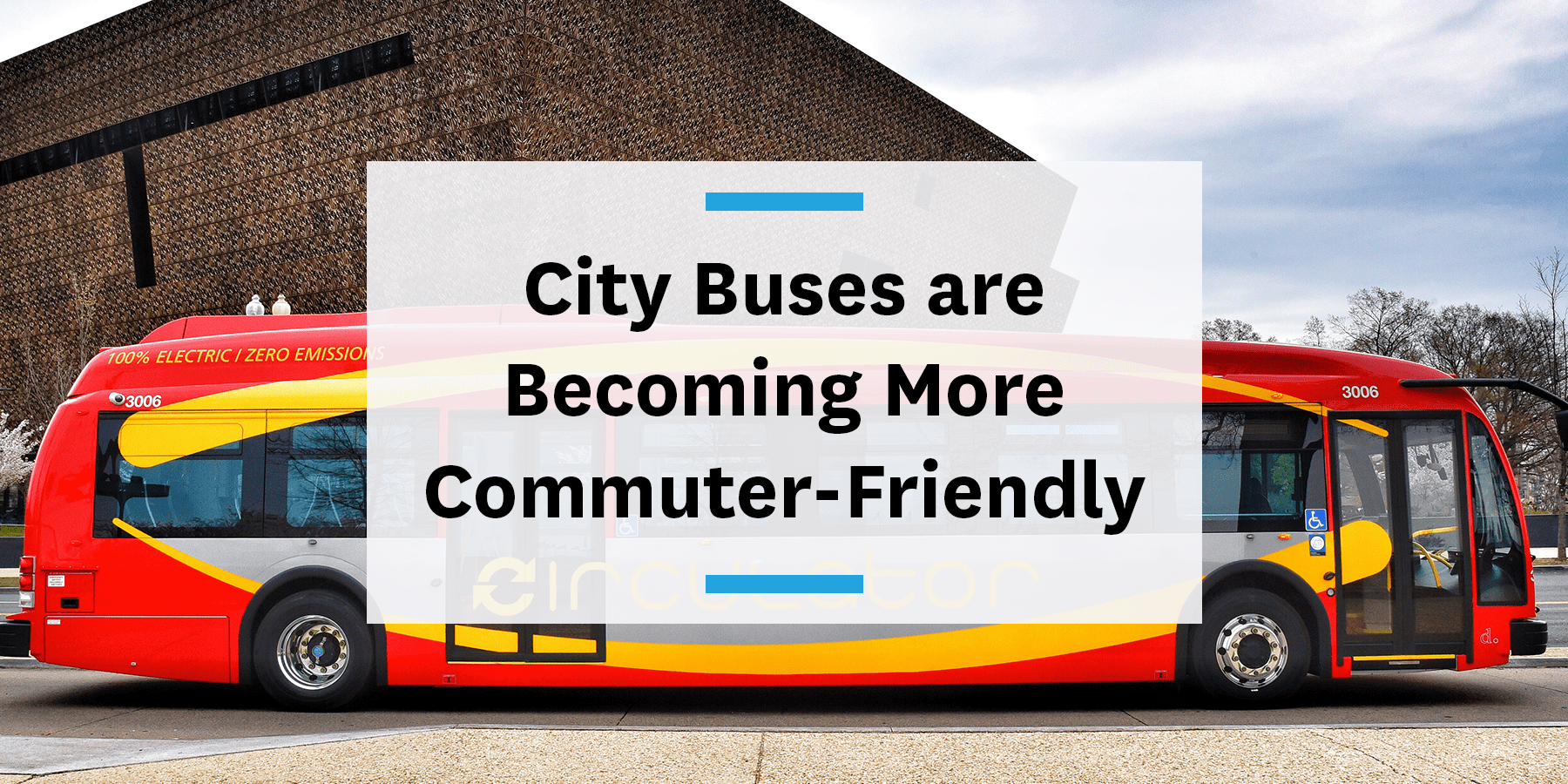City buses have one purpose: to get passengers from point A to point B. While they can usually accomplish this, they still get caught up in traffic, fall behind schedule, and often become overcrowded – especially during peak commute times. But that’s all changing.

In an effort to get cars off the road and make buses a more reliable form of transportation, cities are making major changes. We predicted cities would move away from car-centric street designs to accommodate micromobility options and buses, and they’re here. These efforts are aiming to decrease travel times, increase ridership, and improve the overall passenger experience – and some cities are already seeing positive results.
Red lane service
A booming initiative around the country is painting dedicated bus lanes red, making it extremely known that these lanes aren’t for cars. Dubbed “red carpet service” for city buses, this initiative is already showing an impact in cities across the country.
New York City is on trend with most things, and that holds true for improved bus lanes. In October 2019, New York’s 14th Street was transformed into a bus-only street, allowing limited access to cars. Two weeks after the bus lanes were put into effect, weekday ridership was up 17 percent. Weekend ridership was up more than 40 percent and travel times were down 30 percent in some locations. This success is affected by the limited number of cars, but the results are impressive nonetheless – especially in such a short amount of time.
Boston is another (of many) cities that has painted its dedicated bus lanes red. While the results aren’t as significant as New York’s, the city has still seen the expected improvements. Bus times during peak commute times in Arlington, MA (a Boston suburb) were down 10 minutes as well as more consistent ride times, according to BostonBRT’s findings. Ride times in Boston and Everett, MA, were also down, leading to red bus lanes becoming permanent fixtures in those two cities.
When one door opens
As we mentioned, improving buses is primarily about creating a better rider experience. While shortening travel times and increasing overall reliability is a huge factor, we can’t forget about loading and dwell times. Getting passengers on and off the bus means less time at a stop, which leads to faster travel times overall.
San Francisco became the first major city to allow boarding through all doors, across its entire bus system. Like any change to city infrastructure, this initiative was initially cause for concern. Would riders use back doors to duck riding fares? Well, the opposite is true. When all-door boarding went into effect and new SmartCard readers were installed, ride evasion went from 9.5 percent to 8 percent.
Ride times, boarding times, and dwell times all went down as well. Dwell times across all Muni buses decreased from four seconds to just two and half seconds. When a bus spends less time at a stop, that’s more time spent traveling. Even if a second seems like a small amount, it adds up to a big impact over time.
It’s electric
We’re going to add one more change for city buses: They’re going electric! While electric vehicles (EVs)and hybrids have been around for years, most buses are still running on gas. Cities around the country are starting to invest in electric buses to accommodate the rising focus on local emission levels.
The Antelope Valley Transit Authority, an agency operating north of Los Angeles, is on pace to become the first all-electric bus system in the US. Washington, DC, has also gotten on the electric bus bandwagon. The DC Circulator system added 14 electric buses to its fleet in 2018, saving an estimated 89,000 gallons of diesel fuel per year. The buses also have WiFi for passengers, making commuting a little easier.
Final stop
As we mentioned, there is a major focus on lowering city-wide emissions from local governments around the country, in order to help the environment. In order to continue to increase bus ridership rates, buses need to run faster, be more commuter-friendly, and make life easier. With the new initiatives around bus operations and accommodations, we believe systems around the country are heading in the right direction.




